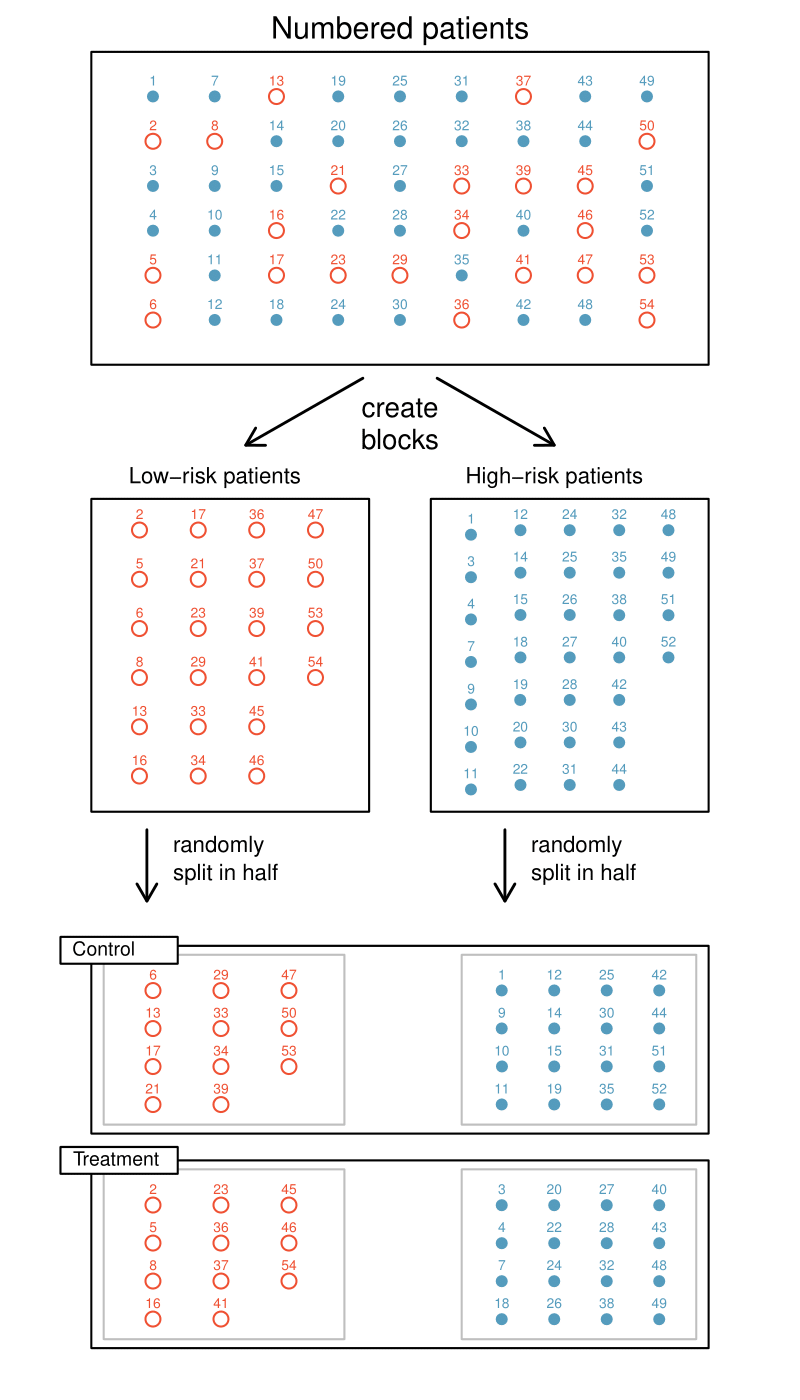Some experiments study more than one factor (explanatory variable) at a time, and each of these factors may have two or more levels (possible values). For example, suppose a researcher plans to investigate how the type and volume of music affect a person’s performance on a particular video game. Because these two factors,
type and
volume, could interact in interesting ways, we do not want to test one factor at a time. Instead, we want to do an experiment in which we test all the
combinations of the factors. Let’s say that
volume has two levels (soft and loud) and that
type has three levels (dance, classical, and punk). Then, we would want to carry out the experiment at each of the six
\((2 \times 3 = 6)\) combinations: soft dance, soft classical, soft punk, loud dance, loud classical, loud punk. Each of the these combinations is a
treatment. Therefore, this experiment will have 2 factors and 6 treatments. In order to replicate each treatment 10 times, one would need to play the game 60 times.
As the number of factors and levels increases, the number of treatments become large and the analysis of the resulting data becomes more complex, requiring the use of advanced statistical methods. We will investigate only one factor at a time in this book.

